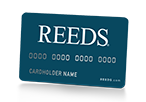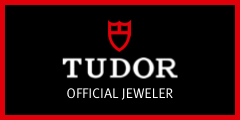Precious Metal Glossary
REEDS Jewelers prides itself on using the finest materials for our jewelry. Learn more about the precious metals we offer and the characteristics that make them so special with our precious metal glossary.
Gold
Gold is a very valuable element that is naturally yellow in color. Although gold is quite strong and is resistant to rust, tarnish, and corrosion, it's also the most malleable of all precious metals. Pure gold is alloyed with a mixture of metals like silver, copper, nickel, and zinc to give it strength and durability for everyday wear. The purity of gold is measured in karats or karatage. Karatage is expressed in 24ths, making 24k gold, 100% gold.
White gold is very popular in all types of jewelry. To make yellow gold have a silvery-white appearance, it is combined with white metal alloys and plated with an extremely hard element called rhodium. Although strong, rhodium may wear away over time. Re-plating is a simple process that can be done to restore whiteness to faded or tarnished jewelry.
Another form of gold is rose gold. With a slightly pinkish hue lending itself naturally to a feminine and romantic vibe, rose tone gold has become a popular option for jewelry in the last few years and continues to be a leader in the world of fine jewelry. Rose gold jewelry is created by mixing gold with copper alloys to produce the rosy-pink appearance.
Silver
Silver is one of the oldest and most valuable types of precious metals. However, 99.9% pure silver, also known as fine silver, is generally too soft for making jewelry, so the silver is usually alloyed with another metal to give it strength and durability. Sterling silver is the most popular of the alloys and consists of 92.5 percent silver and 7.5 percent copper. Other metals can be substituted besides copper, but copper seems to be the best match with silver and doesn't take away from the value of the piece. There are several reasons why silver is such a beloved choice for fine jewelry. It has a gorgeous luster that is unlikely to show much tarnish with age. It is also less likely to show scratches in the same way as gold. Your silver jewelry can last a lifetime as long as you treat it with care! Silver jewelry should be kept either in a cloth pouch or in a separate compartment where you store your jewelry. Never expose silver to household cleaning products or chlorinated water, as these chemicals can damage silver.
Platinum
Perfect for jewelry, the silver-white metal, platinum, is very strong and doesn't tarnish. Due to its resistance to scratches and fading, it is very popular for both engagement rings and wedding bands. Its purity means that platinum is hypoallergenic and its naturally white sheen means that you will never have to re-plate your rings. Platinum is the heaviest of the precious metals and is also considered a noble metal.
Palladium
30 times rarer than gold and lighter than platinum, palladium is naturally white and durable. Palladium is 95% pure when used in jewelry and will not require re-plating to retain its stunning white color. Much like platinum, palladium is a noble metal and is resistance to corrosion and oxidation in moist air.
When choosing fine jewelry for any occasion, it is essential to know the different metal types. With this helpful precious metal glossary, you can make an informed selection to find the ideal metal for your jewelry needs.



